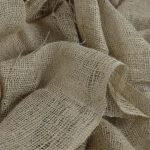Looking to make your denim dyeing process more eco-friendly? Look no further! In this article, we’ve got 11 tips to help you reduce your environmental impact.
From using natural dye sources to recycling and reusing dye, we’ll show you how to make sustainable choices every step of the way.
So grab your organic denim and get ready to make a difference. Let’s dive in!
Table of Contents
Use Natural Dye Sources
To create an eco-friendly denim dyeing process, you can use natural dye sources. Using natural dyes is a great way to reduce the environmental impact of the dyeing process while also reaping several benefits.
Natural dye sources, such as plants, fruits, and vegetables, offer a range of vibrant colors that can be used to create unique and beautiful denim designs.
One of the main benefits of using natural dyes is that they’re biodegradable and non-toxic. Unlike synthetic dyes, which often contain harmful chemicals that can pollute water sources and harm aquatic life, natural dyes are derived from renewable resources and don’t pose a threat to the environment. Additionally, natural dyes are often produced using eco-friendly dye techniques, such as low-temperature dyeing and water-saving processes, further reducing the carbon footprint of the dyeing process.
Another advantage of using natural dyes is that they can add value to the final product. Many consumers are becoming more conscious of the environmental impact of the fashion industry and are actively seeking out sustainable and eco-friendly clothing options. By using natural dyes, denim manufacturers can differentiate their products and appeal to this growing market segment.
Opt for Organic Denim
When it comes to reducing the environmental impact of denim dyeing, one important step is to opt for organic denim.
Organic denim is made from cotton that’s grown without the use of harmful pesticides or synthetic fertilizers, making it a more sustainable option.
Sustainable Denim Options
Choose organic denim for a more eco-friendly and sustainable denim option. Organic denim is made from cotton that is grown without the use of synthetic fertilizers, pesticides, or genetically modified organisms (GMOs). It is produced using methods that prioritize the health of the environment and the well-being of workers. By opting for organic denim, you contribute to the circular economy and support ethical sourcing practices.
To further understand the benefits of choosing organic denim, let’s take a look at the table below:
| Benefits of Organic Denim | |
|---|---|
| 1. Environmental Impact | Organic denim reduces water usage, carbon emissions, and soil contamination. |
| 2. Healthier for Workers | By avoiding harmful chemicals, organic denim protects the health and safety of workers in the production process. |
| 3. Quality and Durability | Organic denim is often more durable and of higher quality, ensuring longer-lasting garments. |
Reducing Environmental Impact
By opting for organic denim, you can significantly reduce the environmental impact of the denim dyeing process. Organic denim is made from cotton that’s grown without the use of harmful pesticides or synthetic fertilizers, which not only benefits the environment but also the health of the farmers.
In addition to reducing chemical pollution, choosing organic denim also helps in reducing water consumption. Traditional denim dyeing processes require large amounts of water, which often leads to water pollution and scarcity. However, eco-friendly dyeing techniques are now being used in the production of organic denim, which minimize the water usage and reduce the overall environmental impact.
Choose Water-Efficient Techniques
Save water during the denim dyeing process by opting for water-efficient techniques. By implementing eco-friendly dyeing methods and water-saving techniques, you can significantly reduce the amount of water consumed during the process. This not only helps in conserving water resources but also minimizes the environmental impact of denim production.
One of the most effective ways to save water in the denim dyeing process is by utilizing techniques like foam dyeing and air dyeing. Foam dyeing involves creating a foam of indigo dye that is applied directly to the fabric, reducing the amount of water required for dye penetration. On the other hand, air dyeing uses compressed air to apply the dye onto the fabric, eliminating the need for water altogether.
Here is a table that highlights the water-saving techniques and their benefits:
| Technique | Description | Benefits |
|---|---|---|
| Foam Dyeing | Indigo dye applied as foam directly to fabric | Reduces water consumption during dyeing |
| Air Dyeing | Dye application using compressed air | Eliminates water usage in the dyeing process |
| Laser Technology | Laser beams used to impart color to denim | Reduces water, chemical, and energy consumption |
| Ozone Technology | Ozone gas used for bleaching and dyeing | Significantly reduces water and energy usage |
Reduce Chemical Usage
To further minimize the environmental impact of denim production, it’s important to reduce the usage of chemicals throughout the dyeing process. By incorporating eco-friendly alternatives and adopting eco-conscious practices, you can contribute to a more sustainable denim industry.
One way to reduce chemical usage is by using natural dyes instead of synthetic ones. Natural dyes are derived from plants, minerals, or insects, making them a safer and more sustainable option. They not only produce beautiful colors but also minimize the release of harmful pollutants into the environment. Consider using dyes made from plants like indigo, which has been used for centuries to dye denim.
Another eco-friendly alternative is to implement enzymatic processes. Enzymes are natural substances that can replace chemicals in various stages of denim production. For instance, they can be used to remove impurities from the fabric, reduce the need for harsh chemicals, and improve the overall quality of the denim. Enzymatic processes not only reduce the environmental impact but also enhance the durability and softness of the fabric.
Additionally, adopting eco-conscious practices such as proper wastewater treatment and recycling can significantly reduce the chemical load in the dyeing process. By treating the wastewater before releasing it back into the environment, you can prevent harmful substances from polluting water sources. Furthermore, implementing recycling systems for chemicals can help minimize waste and conserve resources.
Recycle and Reuse Dye
To promote sustainability in the denim dyeing process, you can contribute by recycling and reusing dye through innovative techniques. Recycling dye is an effective way to reduce waste and minimize the environmental impact of the dyeing process. Instead of discarding unused or excess dye, you can collect and store it for future use. By doing so, you not only save money but also help conserve resources.
One method to recycle dye is through a process called ‘dye bath reuse.’ This technique involves reusing the dye bath from a previous dyeing process to dye additional denim garments. By carefully controlling the dye concentration and pH levels, you can achieve consistent and desirable results while minimizing the amount of dye wasted.
Another way to recycle dye is by extracting dye from wastewater. Wastewater from the dyeing process often contains residual dye that can be recovered and reused. Through advanced filtration and extraction technologies, dye can be separated from the wastewater and recycled back into the dyeing process.
In addition to recycling dye, you can also explore alternative dyeing methods that require less dye in the first place. Techniques such as foam dyeing and digital printing use significantly less dye and water compared to traditional dyeing methods. By adopting these innovative techniques, you can further reduce waste and minimize the environmental impact of denim dyeing.
Implement Natural Indigo Fermentation
One effective way to further enhance sustainability in the denim dyeing process is by implementing natural indigo fermentation. Natural indigo, derived from the leaves of the indigofera tinctoria plant, has been used for centuries in traditional dyeing techniques. By cultivating indigo plants and fermenting their leaves, you can create a natural dye that’s environmentally friendly and free from harmful chemicals.
To begin the process, start by growing indigo plants in a sustainable manner. These plants thrive in warm climates and require minimal water and pesticides. By incorporating natural indigo cultivation into your denim dyeing process, you can reduce the use of synthetic dyes and their associated environmental impact.
Once the indigo plants have matured, harvest their leaves and begin the fermentation process. This involves placing the leaves in a container with water and allowing them to ferment over a period of several weeks. During the fermentation process, the indigo pigment is released from the leaves, creating a rich blue dye.
After fermentation, the dye can be used to color denim through traditional dyeing techniques. These techniques involve immersing the denim fabric into the dye bath and allowing it to absorb the color. By utilizing natural indigo fermentation, you can achieve vibrant and long-lasting denim hues while minimizing the ecological footprint of the dyeing process.
Embrace Plant-Based Fixatives
Now let’s talk about how you can embrace plant-based fixatives to create eco-friendly denim.
By using natural dye alternatives and sustainable dyeing methods, you can reduce the environmental impact of the denim dyeing process.
Plant-based fixatives not only provide vibrant color but also ensure that no harmful chemicals are released into the environment.
Natural Dye Alternatives
You can embrace plant-based fixatives as natural dye alternatives in the denim dyeing process. By using natural dye recipes, you can achieve vibrant colors while also reducing the environmental impact of traditional synthetic dyes.
Natural dyes are derived from plants, such as indigo, madder root, and onion skins, and they offer numerous benefits. Firstly, they’re biodegradable and don’t contribute to water pollution.
Secondly, they’re non-toxic and don’t pose health risks to workers or consumers.
Additionally, natural dyes promote sustainable agriculture as they rely on renewable resources.
Sustainable Dyeing Methods
To continue reducing the environmental impact of the denim dyeing process, incorporate plant-based fixatives for a more sustainable approach. By embracing sustainable dyeing practices and using eco-friendly colorants, you can make a positive impact on the environment.
Here are three reasons why you should consider incorporating plant-based fixatives into your dyeing process:
-
Environmental Benefits: Plant-based fixatives are derived from natural sources such as fruits, vegetables, and flowers. By using these fixatives, you can avoid the harmful chemicals often found in synthetic fixatives, reducing water pollution and minimizing harm to aquatic life.
-
Health Benefits: Synthetic fixatives can release toxic substances that are harmful to human health. By switching to plant-based fixatives, you can ensure a safer working environment for yourself and your employees.
-
Aesthetic Appeal: Plant-based fixatives can produce vibrant and unique colors that can’t be replicated with synthetic fixatives. By embracing these natural colorants, you can create denim garments that stand out and appeal to eco-conscious consumers.
Incorporating plant-based fixatives in your denim dyeing process is a small but significant step towards a more sustainable future.
Explore Low-Impact Dyeing Methods
One option for reducing the environmental impact of the denim dyeing process is to consider low-impact dyeing methods. By utilizing low-energy techniques and eco-friendly dyeing methods, you can significantly decrease the carbon footprint associated with the denim dyeing process.
Low-energy techniques involve using less water and electricity during the dyeing process. For example, instead of using large amounts of water for rinsing and dyeing, you can opt for methods that require smaller amounts of water. Additionally, using energy-efficient machines and technologies can help reduce the overall energy consumption during the dyeing process.
Eco-friendly dyeing methods focus on using natural and non-toxic dyes that have a minimal impact on the environment. These dyes are made from renewable sources and don’t release harmful chemicals into the ecosystem. Additionally, using organic and sustainable materials for dyeing can further reduce the environmental impact.
By exploring low-impact dyeing methods, you can contribute to a more sustainable and eco-friendly denim industry. These methods not only reduce the environmental impact but also provide a safer working environment for the workers involved in the dyeing process.
Consider Laser Technology
When it comes to denim dyeing, you may want to consider laser technology as an alternative to chemical-based methods.
Laser technology offers a more sustainable approach by eliminating the need for harmful chemicals and reducing water consumption.
Additionally, laser technology can be cost-effective in the long run, as it requires less energy and resources compared to traditional dyeing processes.
Laser Vs. Chemicals
Consider using laser technology instead of chemicals when dyeing denim for a more eco-friendly and sustainable approach. Laser technology offers several advantages over traditional chemical dyeing methods, reducing the environmental impact of the denim dyeing process.
Here are three reasons why you should consider laser technology:
-
Reduced Water Consumption: Laser technology eliminates the need for large amounts of water typically used in chemical dyeing processes. By using lasers, you can significantly reduce water consumption, conserving this precious resource.
-
Elimination of Harmful Chemicals: Chemical dyes often contain toxic substances that can harm the environment and pose risks to human health. By opting for laser technology, you can eliminate the use of these harmful chemicals, making the denim dyeing process safer and more sustainable.
-
Energy Efficiency: Laser technology requires less energy compared to traditional dyeing methods. By using lasers, you can reduce energy consumption, contributing to a more sustainable and eco-friendly denim dyeing process.
Sustainability of Laser
To ensure the sustainability of your denim dyeing process, utilizing laser technology offers a significant reduction in environmental impact. Laser technology provides a cost-effective and eco-friendly alternative to traditional dyeing methods. Compared to chemical processes, laser technology eliminates the need for water, harmful chemicals, and excessive energy consumption. It allows for precise and intricate designs, resulting in less material waste and higher production efficiency. Additionally, laser technology reduces the carbon footprint by minimizing water pollution and air emissions. By incorporating laser technology into your denim dyeing process, you can achieve both environmental sustainability and cost-effectiveness. Consider the table below for a comparison between laser technology and traditional dyeing methods.
| Aspect | Laser Technology | Traditional Methods |
|---|---|---|
| Environmental Impact | Reduced water usage, no harmful chemicals | High water usage, chemical pollution |
| Production Efficiency | Precise and intricate designs, less material waste | Less precision, more material waste |
| Cost Effectiveness | Lower energy consumption | Higher energy consumption |
Using laser technology offers a sustainable solution for your denim dyeing process, providing both environmental benefits and cost savings.
Cost-Effectiveness of Laser
To maximize cost-effectiveness, opt for laser technology in your denim dyeing process. Laser technology offers several advantages that can help you save money while also benefiting the environment.
Here are three reasons why laser technology is cost-effective and environmentally friendly:
-
Reduced water and energy consumption: Laser technology requires minimal water and energy compared to traditional dyeing methods. By using lasers, you can significantly lower your utility bills and reduce your environmental footprint.
-
Elimination of chemicals: Laser technology eliminates the need for harmful chemicals, such as bleach and dyes, which are typically used in traditional dyeing processes. This not only reduces the cost of purchasing and storing these chemicals but also minimizes the negative impact on the environment.
-
Increased efficiency and productivity: Laser technology allows for precise and fast dye application, resulting in increased efficiency and productivity. With lasers, you can achieve consistent and high-quality results, reducing the need for rework and saving both time and money.
Practice Responsible Waste Management
One way to practice responsible waste management during the denim dyeing process is by ensuring you properly dispose of any leftover dye and chemicals. It is important to follow environmentally-friendly practices to minimize the impact on the environment. By implementing responsible waste disposal techniques, you can contribute to a more sustainable and eco-friendly dyeing process.
Proper disposal of leftover dye and chemicals prevents them from contaminating water sources and harming aquatic life. Here are some tips for responsible waste management during the denim dyeing process:
| Waste Management Tips | Description |
|---|---|
| Use eco-friendly dyes | Opt for dyes that are non-toxic and biodegradable. |
| Implement recycling | Set up a recycling system to properly dispose of plastic containers and packaging materials. |
| Treat wastewater | Install a wastewater treatment system to remove harmful chemicals before releasing them into the environment. |
| Promote reuse and re-purpose | Explore options to reuse or repurpose leftover dye and chemicals instead of disposing of them. |
Educate and Spread Awareness
Spread awareness and educate others about eco-friendly practices in the denim dyeing process to promote a more sustainable fashion industry. By sharing knowledge and information, you can make a significant impact on reducing the environmental footprint of denim production.
Here are three ways you can contribute to responsible waste management and inspire others to do the same:
-
Host workshops and seminars: Organize educational events where you can discuss the harmful effects of conventional dyeing methods and introduce eco-friendly alternatives. Show practical demonstrations of sustainable dyeing techniques, such as natural dyeing or waterless dyeing, to inspire others to adopt these practices.
-
Collaborate with influencers and brands: Join forces with influencers, fashion bloggers, and sustainable brands to amplify your message. Encourage them to promote responsible waste management and eco-friendly dyeing methods through their platforms. Together, you can reach a wider audience and create a ripple effect of change.
-
Engage in online activism: Utilize social media platforms and online communities to share educational content, raise awareness, and spark conversations about the importance of sustainable denim dyeing. Encourage your followers to take small steps towards responsible waste management, such as choosing organic or recycled denim, supporting brands with eco-friendly practices, and properly disposing of old denim garments.
Frequently Asked Questions
What Are Some Examples of Natural Dye Sources That Can Be Used in Denim Dyeing?
You can use natural dye sources for eco-friendly dyeing. Some examples are indigo, madder root, and onion skins. These dyes not only give your denim a unique color but also minimize the environmental impact.
How Can Organic Denim Contribute to a More Eco-Friendly Dyeing Process?
To have a more eco-friendly dyeing process, you can use organic denim. It contributes to sustainable dyeing methods and eco-friendly denim production.
What Are Some Water-Efficient Techniques That Can Be Implemented During Denim Dyeing?
To implement water-efficient techniques during denim dyeing, you can try methods like foam dyeing or ozone fading. These eco-friendly dyeing techniques can reduce water consumption and have the added benefit of minimizing environmental impact.
How Can Chemical Usage Be Reduced in the Denim Dyeing Process?
To reduce chemical usage in denim dyeing, you can explore innovative technologies and alternative dyeing methods. These approaches offer eco-friendly solutions that minimize the environmental impact of the dyeing process.
What Are Some Ways to Recycle and Reuse Dye in Order to Minimize Waste During Denim Dyeing?
To minimize waste during denim dyeing, you can recycle and reuse dye. Try using recycled dye alternatives and innovative waste reduction techniques. By doing so, you can contribute to a more eco-friendly denim dyeing process.
- Tetron Fabric for Automotive Applications: Durability and Performance - June 17, 2025
- Tetron Fabric for Home Textiles: Uses and Benefits - June 17, 2025
- Tetron Fabric for Apparel: Style and Comfort Tips - June 17, 2025






